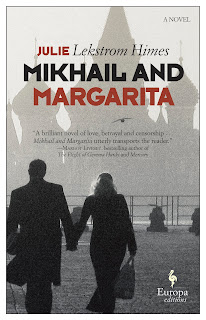As a general rule I don't like introductory college textbooks. They are, and they long have been, way too big and way too heavy for my taste, making them, as a consequence, almost impossible to hold in one's hands let alone carry them around.
There are a number of reasons I don't like your standard contemporary university text. In order to read them you have to have some sort of desk or desk-like surface, something that makes them less portable and more difficult to deal with compared to mass market or standard sized trade books. They are too sexy, or perhaps better put, they attempt to be sexy filled with colour photos, graphs galore, and numerous subject or thematic boxes that are stuffed in the book in an attempt, generally unsuccessful, to appeal to students brought up on a steady diet of adolescent film, television, and digital streaming. They are generally of the kitchen sink variety filled to the brim, as they are, with information that attempts to appeal to a number of identity groups (including the White identity group that generally and delusionally so does not see itself as an identity group) in the broader population in Western core states. As a consequence, they are the academic version of a kind of polemical dictionary or, at best, a partly polemical encyclopedia, something that, in turn, makes them perfect, I suppose, for generations with limited attention spans and limited interests in anything academic in the first place. And they are way too expensive particularly for middle class and poorer students attending university or college on a tight budget these days.
Not all introductory history textbooks require a crane to operate, however. Canadian historians Kenneth McNaught's, John Saywell's, and John Ricker's excellent Manifest Destiny: A Short History of the United States (Toronto: Clarke, Irwin, and Company, revised edition, 1980), Welsh historian Maldwyn Jones's excellent The Limits of Liberty: American History 1607-1922 (Oxford: Oxford University Press, second edition, 1995), American historians Peter Carroll's and David W. Noble's excellent The
Free and the Unfree: A Progressive History of the United States (New
York: Penguin, third revised edition, 2001), and prolific American historian Jill Lepore’s excellent These Truths: A History of the United States (New York: Norton, 2018) all look like the books one might find on the shelves of that once endangered species, the local independent bookstore that sometimes stocks academic books or used bookstores particularly in college towns.
America Empire of Liberty: A New History of the United States (New York: Basic, revised and updated, 2021 [first edition 2009]) by Cantab (Christ's) historian David Reynolds is another textbook that looks like a book one would find on the shelves of a local book shop. Like all of the books noted above, including the single authored one's by Jones and Lepore, Reynolds's book is characterised by greater narrative coherence than your standard introductory textbook on American, Canadian, Australian, or New Zealand history these days. As Reynolds explains in an introductory chapter and again in his conclusion, he focuses his "new" history of the United States around the ideology of liberty--as did Eric Foner in his Give Me Liberty textbook (New York: Norton, 2004) and more successfully, in my opinion, in his The Story of American Freedom (London: Macmillan, 1998)--the ideology and practise of empire (continental and global American manifest economic, political, cultural, demographic, and geographic destiny), and the ideology and culture of faith, something, Reynolds argues, that is the glue that holds liberty and empire together for many true believing Americans. Like Foner (and others) Reynolds is also aware of and explores the fact that there are dominant or hegemonic, countercultural, and subcultural meanings attached to liberty or freedom, empire, and faith in the United States, something that Daniel Rodgers does well in his Contested Truths: Keywords in American Politics Since Independence (1987). a book presumably modelled, to some extent, on Raymond Williams's seminal Keywords (first edition, 1976).
Reynolds's book, though it is more standard book-like than most if not all introductory textbooks these days, is actually not on a substantive level all that different from other contemporary textbooks in American history once one gets beyond the issue of narrative coherence. Foner's book, as I noted earlier, does something similar and like Reynolds' book, weaves into it, though not always successfully in my opinion, traditional narrative history, the "new" social history, the "new" cultural history, the "new" class history, the "new"gender history, and the "new" and ethnic and racial history, the standard subgenres of the contemporary historical enterprise these days. It does so by grafting these "new" histories onto a standard "old" history template of great men and great events that are presumed to be the long term and short term bedrock of historical dynamics by most historians even today, at least when they are publishing general histories.
So, like other contemporary introductory textbooks America, Empire of Liberty ends up being, to a large extent, another kitchen-sink style introduction to American history. Reynolds hits the usual high spots of American history with his historical darts: colonisation, revolution from imperial Britain, the making of a new nation that was, to some extent, grounded in an English conception of liberty, the compromises that were necessary to create what Seymour Martin Lipset calls the first new nation, the culture war over slavery and its groundedness in European ethnocentrism and racism, the Civil War fought over whether the US would be dominated by slave labour or free labour, or whether it would be"tyrannical" or "free" (concepts that were perceived somewhat differently between the American North and the Amrican South), reconstruction and the freeing, if limitedly, of the slaves and the reinstitution of slavery by another name in the Jim Crow South, industrialisation and the transportation revolution, World War I, the Great Depression, World War II, the Cold War, and the decline of modernist America and the rise of postmodernist America and the culture wars that undergird both. Along the way, Reynolds introduces us to some celebrrated names in the American mythological civil firmament or the American mythological gehenna, depending on one's point of view, including George Washington, the pragmatic or hypocritical Thomas Jefferson, James Madison, Abraham Lincoln, Franklin Delano Roosevelt, Dwight David Eisnhower, Lyndon Baines Johnson, George Bush one and two, Bill Clinton, Barack Obama, and that delusional demagogue in chief, Donald Trump.
As a largely traditional textbook that, at the same time, takes seriously the revolution in historiography that blossomed particularly in the 1960s and after (social history, cultural history, ethnic history, class history) Reynolds' book is not, in my opinion, as good as another traditional yet postmodernist textbook on American history, Unto a Good Land: A History of the American People (Grand Rapids, MI: Eerdmans, 2005) by American historians David Harrell, Edwin Gaustad, John Boles, Sally Griffith, Randall Miller, and Randall Woods. Unto a Good Land, while perhaps not as narratively focused around the key American civil religious symbols of liberty and empire, explores these in detail and does a better job, in my opinion, of exploring American faith. That said, Reyonold's deserves credit and praise for emphasising the role religion in American life and culture whether of the Christian variety or the American nationalist variety (which is also often dominated by Christian nationalism) and explores the role these faiths have played in American history and American culture and ideology. Anyone who doesn't recognise the role faith has played in American history from the revivals of the nineteenth century to the role religion played in the abolitionist and Southern slavery faiths to the social gospel, to the rise of fundamentalism, a modern reaction to other aspects of modernism, to the election of Ronald Reagan, and to the election of Donald Trump, is blind or have made themselves blind. Finally, Reynolds nicely, if too sketchily and limitedly, addresses the question of American exceptionalism, a central belief in the American public or civil religious meaning system, arguing, rightly in my opinion, that the US must be viewed as lying on a continuum along with other messianic English and British settler societies like Canada, Australia, and New Zealand.
A good entry in the American history textbook market that gratefully emphasises content over image making it somewhat of an anomaly in a postmodernist textbook world where image seems to often be more important than content.















